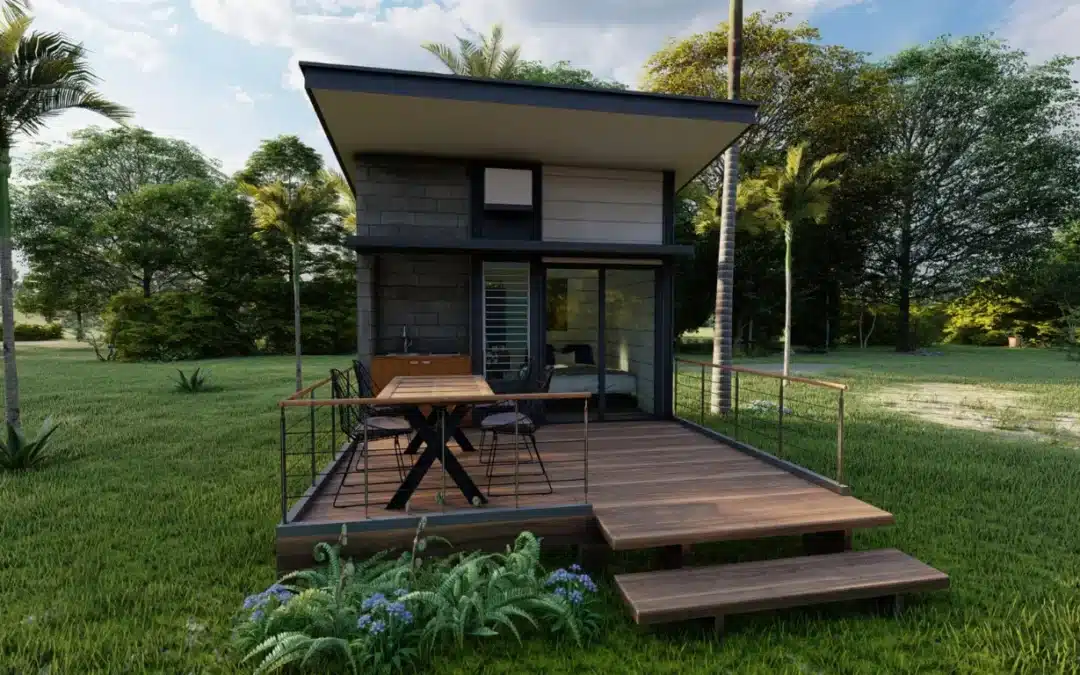What Are the Benefits of Choosing a Tiny House for Modern Living in Malaysia?
As land prices rise and sustainability becomes a growing concern, the tiny house movement is starting to take hold in Malaysia. More homeowners are exploring smaller homes not as a compromise, but as a conscious lifestyle upgrade. Tiny homes offer flexibility, reduced costs, and a lower environmental footprint, making them ideal for first-time homeowners, retirees, or anyone seeking a more intentional way to live.
While the lifestyle benefits are compelling, turning the tiny house dream into a reality requires careful planning. Make sure your design choices are fully compliant by first mastering the rules in our comprehensive guide on tiny house zoning and permits in Malaysia.
Whether you’re looking for a weekend getaway, a private home office, or a full-time residence, tiny homes can deliver a big impact with a small footprint. Here’s how:
Tiny Homes Offer Big Savings
One of the biggest appeals of tiny houses is financial. These homes are far less expensive to build and maintain than traditional properties, allowing homeowners to redirect their budgets toward other priorities.
Here’s how they help save money:
- Lower upfront construction costs due to fewer materials and a smaller footprint
- Reduced utility bills, since there’s less space to cool, light, or power
- Minimal maintenance and repair costs, with fewer fixtures and finishes to maintain
- Lower property taxes and insurance premiums in many areas
Tiny homes are also easier to customise over time. If you decide to upgrade appliances, install solar panels, or add smart technology, you’ll find that costs are lower simply because you’re working with a more compact space.
Custom Design for Modern Lifestyles
Tiny houses are anything but boring. In fact, designing a tiny home is often more creative than building a standard-sized one. Space constraints lead to innovative solutions, where each area serves multiple functions and every inch counts.
Customisation options include:
- Multi-functional furniture like fold-out beds, wall-mounted desks, or convertible seating
- Creative storage built into staircases, floors, and ceiling cavities
- Defined zones for work, relaxation, and sleep, even in a single open-plan area
- Personal style that matches your aesthetic preferences, from industrial to boho
Our tiny house design services in Malaysia focus on functionality without sacrificing comfort. We help clients make the most of their available space with thoughtful layouts, smart material choices, and long-lasting design finishes.
Eco-Friendly Living with a Smaller Footprint
If you’re concerned about sustainability, a tiny house is one of the most effective ways to reduce your environmental impact. Living in a smaller space naturally leads to lower energy usage and more conscious consumption.
Why tiny homes are greener:
- They use fewer materials during construction, reducing carbon output from the start
- Energy use is lower, particularly when paired with insulation and passive design
- Water-saving fixtures, solar energy systems, and composting toilets are easier to install and manage
- Homeowners tend to adopt more minimalist habits, leading to less waste overall
By choosing a tiny home, you’re not only saving on monthly bills but also making a long-term investment in a more responsible and sustainable way of living.
Legal Considerations and Practical Planning in Malaysia

Before breaking ground on a tiny home project, it’s important to understand the legal framework in Malaysia. Not every location is suitable, and building regulations can vary significantly depending on local council rules.
What to check before you begin:
- Land zoning restrictions, which may determine whether tiny homes on permanent foundations are allowed.
- Permit requirements for foundations, electrical work, and plumbing
- Minimum dwelling size regulations, which may apply in some states
- Access to utilities such as water, electricity, and sewage
Having the right guidance from the start can prevent delays and costly redesigns. If you’re unsure about compliance or location options, engaging professionals early in the process is highly recommended.
Is a Tiny House Right for You?
The tiny house lifestyle isn’t just about downsizing, it’s about living more intentionally. It appeals to people who value experiences over belongings, efficiency over excess, and design over size.
Here are a few questions to consider before taking the leap:
- Do you enjoy keeping your environment organised and clutter-free?
- Are you comfortable with open-plan living or multi-functional spaces?
- Would you prefer spending less on housing and more on travel, hobbies, or savings?
- Are you ready for a lower-maintenance lifestyle that still feels stylish and functional?
If the answer is yes to most of these, then a tiny house might be the perfect match for your next chapter.
Conclusion
Choosing a tiny home in Malaysia is more than just a trend, it’s a smart, stylish, and sustainable lifestyle decision. With rising living costs and growing interest in minimalist living, many Malaysians are discovering the freedom and practicality that tiny houses provide.
Whether you’re interested in a custom design or want to explore layout ideas, our compact living solutions offer a variety of modern approaches to tiny home living. If you’re ready to talk through your vision or have specific questions, feel free to contact our team for expert guidance on turning your ideas into reality.
1. Are tiny houses legal in Malaysia?
Yes, tiny houses are legal in Malaysia, but there are certain regulations that homeowners must follow. Approval depends largely on the local council’s zoning rules and building guidelines. For example, land must be properly zoned for residential use, and your design may need to meet minimum size and safety requirements. It is important to check with your local authority and work with experienced professionals to ensure full compliance before construction begins.
2. How much does it cost to build a tiny house in Malaysia?
The cost of building a tiny house in Malaysia can vary depending on size, design, materials, and whether it is built on wheels or a permanent foundation. On average, homeowners can expect to spend between RM90,000 and RM250,000. Custom designs with higher-end finishes or off-grid features may increase the budget. Compared to traditional homes, tiny houses offer significant savings and reduced long-term maintenance expenses.
3. Can a family live comfortably in a tiny house?
Yes, many families can live comfortably in a well-designed tiny house, especially when the layout is tailored to meet their daily routines and storage needs. Smart zoning, multi-purpose furniture, and built-in storage solutions help maximise space and functionality. While it requires some adjustment, many families find the lifestyle less stressful, more affordable, and better suited to spending quality time together.
4. What are the main benefits of living in a tiny house?
Tiny house living offers several key benefits, including lower housing costs, reduced utility bills, and less time spent on cleaning and maintenance. The lifestyle also encourages mindful consumption and often supports a more sustainable way of living. For many Malaysians, tiny homes provide the freedom to live in desirable locations without the burden of a large mortgage or costly renovations.
5. Do tiny houses require planning permission in Malaysia?
Yes, tiny houses typically require planning permission in Malaysia, especially if they are built on a permanent foundation. Permanent or modular units may also need approvals depending on where they are placed. Authorities will look at factors such as structural safety, access to utilities, and whether the building complies with existing planning laws. It is strongly recommended to consult a design or construction expert familiar with local rules before starting your project.


Recent Comments